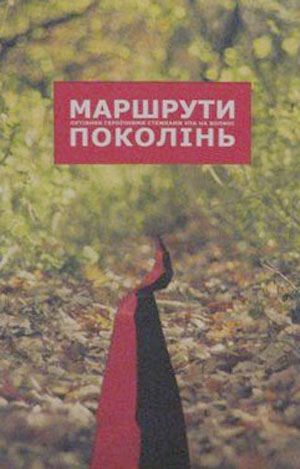The unpredictable routes of the generations
A book about the UPA, financed by a German foundation, has been published in Volyn
Lutsk — The compiler of the book Routes of the Generations, Candidate of Science (History), journalist, and history teacher Lesia Bondaruk says that this fact has induced some of her ideological opponents to sigh with regret. They lamented that a “sin” had been committed by the Germans, who had allegedly reached new depths of moral degradation by financing the Banderites. However, according to Bondaruk, the German Remembrance, Responsibility, and Future Foundation that made the publication of this guidebook, complete with the subtitle Along the Heroic Paths of the Ukrainian Insurgent Army (UPA) in Volyn, possibly, did exactly what it was supposed to do — to sponsor an international project dealing with a critical approach to history and humanitarian aid for the victims of the Nazi regime. Indeed, the foundation was established to pay compensation to former forced workers of Nazi Germany.
Before the book was created Volynian scouts had traveled along the paths connecting the places of the Ukrainian insurgents’ glorious battles throughout Greater Volyn. These paths were later described in the guidebook. They gathered the testimonies of 90 participants of the insurgency and camped in some places of particular importance to the history of this movement. One such place is the small village of Vovchak, surrounded by impenetrable forests and swamps. In the late summer of 1942, it was Vovchak that hosted the Organization of Ukrainian Nationalists (OUN)’s Kovel and Liuboml districts’ military base, as well as headquarters of the UPA-North and the army’s Turiv military district. The first line of a well-known song “The UPA Has Emerged Somewhere Far Away in Volyn,” refers precisely to Vovchak.
The area around the village hosted dugout quarters for the insurgents, arms depots, craft shops, a 120-bed hospital, and an officer school of the UPA, with 200 young men enrolled in the course. All in all, it was a fairly well developed infrastructure, which provided all things necessary for the activities of the local units of the UPA. Interestingly, apart from local residents and other Ukrainians, the local UPA force included former Red Army soldiers of various ethnicities, who had escaped from the POW camp in Volodymyr-Volynsky or made it to Vovchak by other means. The total number of insurgents based in Vovchak exceeded 1,000 people! Later on, the Soviets had not left a trace of the village’s Banderite past: even the graves of insurgents were plowed with tractors. Today, the only reminders of Vovchak’s past are a small sign and the old village cemetery, where a few insurgent graves remain.
Vasyl Kushnir, head of the Volyn branch of the UPA Veterans’ Brotherhood recalls how some years ago, when he was working at a Volynian school, he organized a three-day trip for his students to the sites of the battles that were fought for the nation’s liberation. After the trip, many of them admitted that they had begun to look at these events differently, with some students having dramatically changed their worldviews. The case of an employee of the Teren publishing house is another example of how important knowledge of the true history may be, especially for young people. She is originally from the town of Kolky, which was the launching place for the UPA-created “Kolky Republic,” named for the force that was based in several Kolky-controlled districts of Volyn and neighboring Rivne regions. This Polissian town was the residence of the UPA commander Klym Savur. Long story short, the “republic” was a genuine Ukrainian state. There were schools and hospitals, Savur even intended to conduct a land reform and to distribute land to the peasants. However, after just a few decades the memory of the Ukrainian island of freedom, as UPA-era Kolky is sometimes called, vanished so completely that the town’s native populace knew nothing about these events. One of the first readers and experts of the guidebook was the former leader of the OUN’s Lutsk district, 91-year-old Stepan Semeniuk, who now lives in Poland.
The publishers intend to distribute the guidebook to schools, libraries and museums, while Volyn scouts are preparing six information stands to complement the book in telling its heroic tales. The book is full of unique and rare photos, and also includes detailed route maps — for cars, bikes, and hiking. On a less sanguine note, apart from the heroic history of the UPA, Volyn has nothing to offer those wishing to enjoy the region, as the tourism infrastructure at these historical sites is underdeveloped or non-existent. However, as the Head Scout of Volyn Lina Ostapchuk asserts, camping in a tent, around a fire under the stars, and listening to the last survivors of the UPA recalling their past in the places where they fought in their youth, helps one better understand what led these people into battle and what their principles were.






